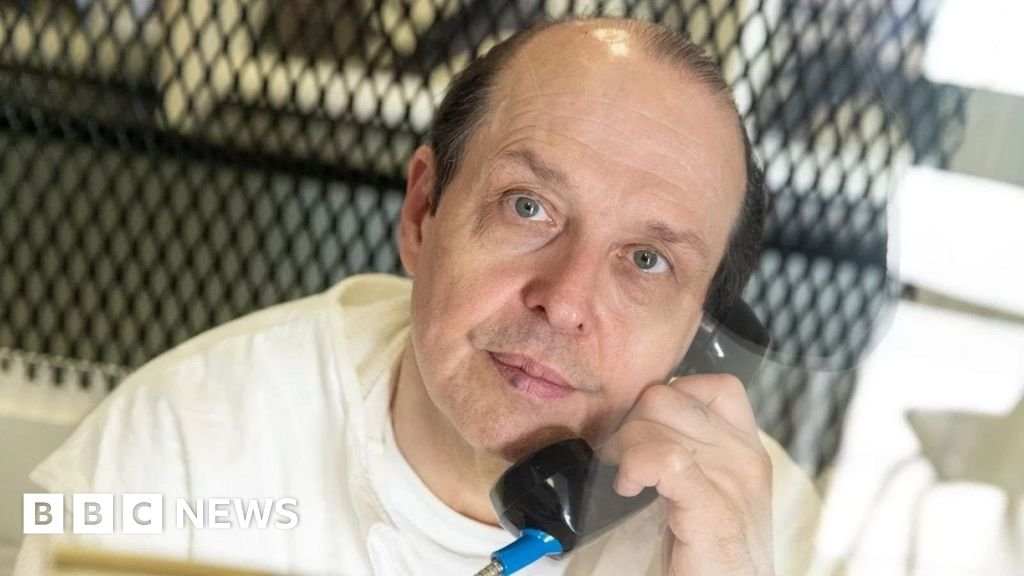Innocence Project / Ilana Panich-Lensman
Robert Roberson’s case is the latest in a series of high-profile death row cases that have received public attention in recent weeks
For more than 20 years, Robert Roberson has been on death row for a crime he says never happened.
He was sentenced in 2003 for the death of his two-year-old daughter, Nikki, after doctors and an autopsy report concluded that she died from injuries caused by abuse. But Roberson, his attorney and others say she died not of “shaken baby syndrome,” as prosecutors claimed, but of complications related to pneumonia.
However, prosecutors insist that Roberson’s new evidence does not refute their case that the child died from injuries inflicted by her father.
A diverse group is calling for leniency as Roberson’s October 17 execution date approaches. It includes 86 Texas lawmakers from both major parties, dozens of medical and scientific experts, autism advocates, attorneys, and even the lead investigator in the case who helped secure Roberson’s conviction. There’s also best-selling author John Grisham.
“In Robert’s case, there was no crime, and yet we are about to kill someone over it in Texas,” Grisham told reporters in September.
The Court of Appeal agreed in 2023 that there was insufficient evidence to overturn the conviction. The Supreme Court refused to hear his case.
Roberson’s recent efforts to appeal his conviction were unsuccessful. The Texas Board of Pardons and Paroles has until October 15 to recommend a clemency, which is up to Gov. Greg Abbott to grant.
“We must do everything we can to rein this in before it taints Texas justice for generations,” Democratic State Representative Joe Moody said.
‘An unusual number of executions’
Roberson’s case is the latest in a series of high-profile death row cases that have received significant public attention in recent weeks.
Maya Foa, director of Reprieve USA, an anti-death penalty organisation, told the BBC that there was currently a “wave of executions” in the country.
Last week, the Supreme Court heard arguments to overturn the murder conviction of Richard Glossip, who was convicted of orchestrating the murder of his boss. He was scheduled to be executed in Oklahoma nine different times.
The court will decide whether his conviction should be overturned based on the allegation that prosecutors withheld information from a key witness against him, who also lied on the stand.
The court had already suspended the execution of the death sentence.
But last month, the Supreme Court refused to halt the execution of Marcellus Williams, a black man convicted of killing a journalist in 1998.
Prosecutors have since questioned his guilt, and the victim’s family has opposed his execution. He was executed on September 24.
Four more men were executed the same week as Williams — making it the highest execution rate since 2003, an “extraordinary” number, according to Robin Maher, executive director of the Death Penalty Information Center, a nonprofit research organization critical of the death penalty. How is the death penalty applied in America?
“The unusual number of executions was not the result of any single event or coordinated effort,” she said.
“It simply reflected the agendas of elected state officials, who had become increasingly disconnected from the interests and priorities of their constituents regarding the death penalty.”
Opinion polls indicate that support for this punishment has declined over the past thirty years, as a recent Gallup poll indicated that 53% of Americans support the death penalty.
If Roberson is executed on Thursday, his death will be the 19th execution of 2024.
The probability of execution varies greatly from state to state. The death penalty is not practiced in 23 states, while an additional 15 states have not executed anyone for at least five years. Last year, five states — Texas, Oklahoma, Florida, Missouri and Alabama — carried out all 24 executions.
“Shaken baby syndrome”
If Roberson’s death sentence is carried out, he will be the first person in the United States to be executed for “shaken baby syndrome.”
Medical experts once used this syndrome to describe brain injuries and deaths in children who were shaken or violently assaulted. But it has come under scrutiny in recent years because of how it has been used in court cases.
In 2009, the American Academy of Pediatrics changed the name of shaken baby syndrome to “abusive head trauma.” Regardless of its name, it is the leading cause of fatal brain injuries in children under the age of two.
It is usually diagnosed after evidence of retinal hemorrhage, brain swelling and bleeding in the brain is found.
While the diagnosis is widely accepted by the medical community, a recent report highlighted the need for a thorough examination of other causes before concluding that injuries were due to abuse.
“The question that must be answered is: Is there a medical reason to explain all the results or does this child have an established injury?” The world’s leading pediatric organizations wrote in a consensus statement published in the journal Pediatric Radiology.
According to Roberson’s account, Nikki fell out of bed before she died. says he
He soothed her and went back to sleep – but when he woke up, she wasn’t breathing and her lips were blue. Roberson says he took her to the hospital, where doctors said she was showing signs of brain death. She died the next day.
Medical staff immediately suspected she had been abused, due to bruising to her head, swelling on the brain and bleeding behind her eyes, court documents show. An autopsy conducted after Roberson’s arrest concluded that she died from blunt force trauma to the head and that her death was ruled a homicide.
Roberson’s lawyers say new evidence shows she was suffering from pneumonia at the time of her death and it developed into sepsis.
Roberson took her to the hospital and saw doctors repeatedly in the days before her death. His lawyers pointed out that she was prescribed medications that are no longer given to children because they can cause serious complications. They argue that the medications, in addition to her fall, could be responsible for the bruising, swelling and bleeding that doctors found in her brain and behind her eyes.
Roberson was also diagnosed with autism after his conviction, which his lawyers say explains the lack of emotion police saw when his daughter died, and their bias against him.
Brian Wharton, the lead investigator in Roberson’s case who testified against him at trial, is one of the people now seeking leniency for the man.
“I will forever be haunted by the role I played in helping the state put this innocent man on death row,” he wrote in a letter of support. “Robert’s case will forever be a burden on my heart and soul.”











